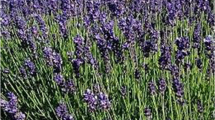Summary
A microchemical approach for the identification of plant source of Chinese diuretic crude drug “Dan-zhu-ye” using low-temperature plasma ashing is reported. The specimen was ashed on a microscope slide and the remaining ashed tissue was microscopically compared with other specimens of bamboo and bamboo grasses. Characteristic distribution patterns of silicon bodies and their shape in Dan-zhu-ye have suggested that the plant source of the crude drug isLophatherum sinense Rendle or at least its very close relative.
Zusammenfassung
Über die Ergebnisse der Tieftemperatur-Veraschung der chinesischen Rohdroge “Dan-zhu-ye” zwecks pflanzlicher Zuordnung dieses Diureticums wurde berichtet. Das Untersuchungsobjekt wurde auf einem Objektträger verascht und der Geweberückstand unter dem Mikroskop mit anderen Proben von Bambus und Bambusgräsern verglichen. Charakteristische Verteilungsmuster von Siliziumkörperchen und deren Form in “Dan-zhu-ye” legen die Annahme nahe, daß die Droge von Lophatherum sinense Rendle stammt oder ihm wenigstens sehr nahe steht.
Similar content being viewed by others
References
C. E. Gleit and W. D. Holland, Analyt. Chemistry34, 1454 (1962).
C. E. Gleit, Amer. J. Med. Electron.2, 112 (1963).
C. Berkley, J. Churg, I. J. Selikoff, and W. E. Smith, Ann. N. Y. Acad. Sci.132, 48 (1965).
J. Hollahan, J. Chem. Educ.43, A 401 (1966).
K. Hozumi and M. Matsumoto, Japan Analyst21, 206 (1972).
K. Hozumi, Kagaku-no-Ryoiki (J. Japanese Chem.)25, 713 (1971).
K. Umemoto and K. Hozumi, Chem. Pharm. Bull. Tokyo19, 217 (1971).
K. Umemoto and K. Hozumi, J. Pharm. Soc. Japan91, 828 (1971).
K. Umemoto and K. Hozumi, J. Pharm. Soc. Japan91, 845 (1971).
K. Umemoto and K. Hozumi, J. Pharm. Soc. Japan91, 850 (1971).
K. Umemoto and K. Hozumi, J. Pharm. Soc. Japan91, 890 (1971).
K. Umemoto and K. Hozumi, J. Pharm. Soc. Japan91, 908 (1971).
K. Umemoto and K. Hozumi, J. Pharm. Soc. Japan91, 1047 (1971).
K. Hozumi, M. Hutoh, and K. Umemoto, Microchem. J.17, 173 (1972).
K. Umemoto and K. Hozumi, Mikrochim. Acta1972, 748.
Author information
Authors and Affiliations
Rights and permissions
About this article
Cite this article
Umemoto, K., Hutoh, M. & Hozumi, K. Identification of the plant source of the Chinese crude drug „Dan-zhu-ye“ using the low-temperature plasma ashing technique. Mikrochim Acta 61, 301–313 (1973). https://doi.org/10.1007/BF01219189
Received:
Issue Date:
DOI: https://doi.org/10.1007/BF01219189




